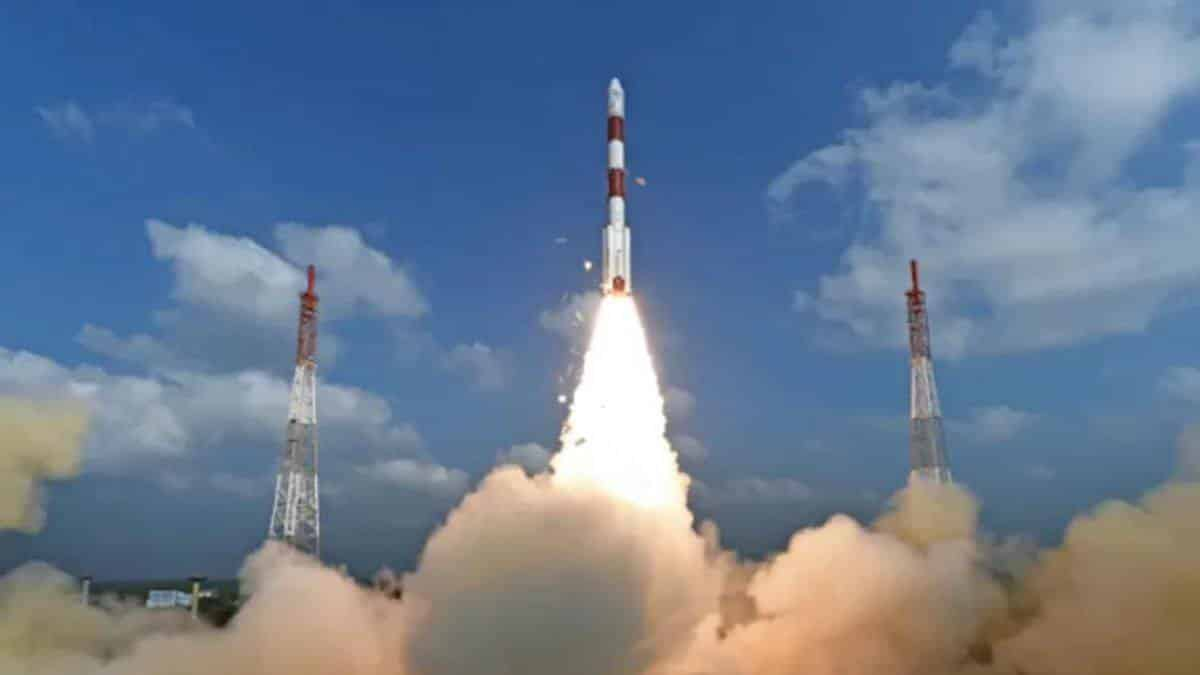ISRO Completes Human-Rated S200 Rocket Booster Test for Gaganyaan Mission in 2023
The newly tested HS200 rocket booster is a human-rated version of the GSLV-Mk3 satellite launch vehicle’s well-proven S200 rocket booster.

The Indian Space Research Organisation (ISRO) completed a historic static test of a human-rated solid rocket booster (HS200) at Sriharikota’s Satish Dhawan Space Centre (SDSC) at 7.20 a.m. on Friday for its Gaganyaan programme. The identification of the heavy-lift launcher, GSLV MkIII, and the process for a human rating of GSLV MkIII for India’s historic space mission was accomplished in 2020.
ISRO had created the first crucial booster segment of the motor case with a diameter of 3.2 metres, 8.5 metres in partnership with L&T and had flagged it off on November 13, 2020, as its first step towards its unmanned space programme.
— ISRO (@isro) May 13, 2022
The newly tested HS200 rocket booster is a human-rated variant of ISRO’s Rs 10,000 crores space project’s well-proven S200 rocket booster for the GSLV-Mk3 satellite launch vehicle or the LVM3. Gaganayaan will be the Indian orbital spacecraft for ISRO’s Indian Human Spaceflight Programme (IHSP), which plans to deploy orbital spacecraft into low earth orbit in 2023.
The human-rated GSLV-Mk3, which will be known as the HRLV, is a significant milestone in the Gaganyaan mission. The performance of the first stage of the launch vehicle was tested by ISRO experts for a whole period of 135 seconds. The HS200 booster, which is 20 metres long and weighs 203 tonnes of solid propellant, is the world’s second largest operating launcher of its kind. Out of the three propulsion stages of the GSLV-Mk3, the human-rated version of L110-G loaded with liquid propellant is the second stage ahead of the final qualification, according to ISRO.

‘Gaganyaan,’ India’s first human space flight mission
According to Union Minister Jitendra Singh, India’s first human space travel mission, ‘Gaganyaan,’ is slated to launch next year in 2023. The first crewed mission will consist of two unmanned launches, with the first set to launch in the second half of 2022 and the second set to launch at the end of the same year. If these flights are successful, India will join the ranks of the United States, Russia, and China as the fourth country to launch a human spaceflight mission.
Prime Minister Narendra Modi announced earlier in 2018 that India would launch its first man or woman into space by 2022, but the preparations were thwarted owing to the COVID virus. ISRO will launch an unmanned mission using a spacefaring robot named “Vyommitra” ahead of the first manned mission. In terms of preparing to launch actual humans, a facility for astronaut training is now being created in Bengaluru and is nearing completion.

